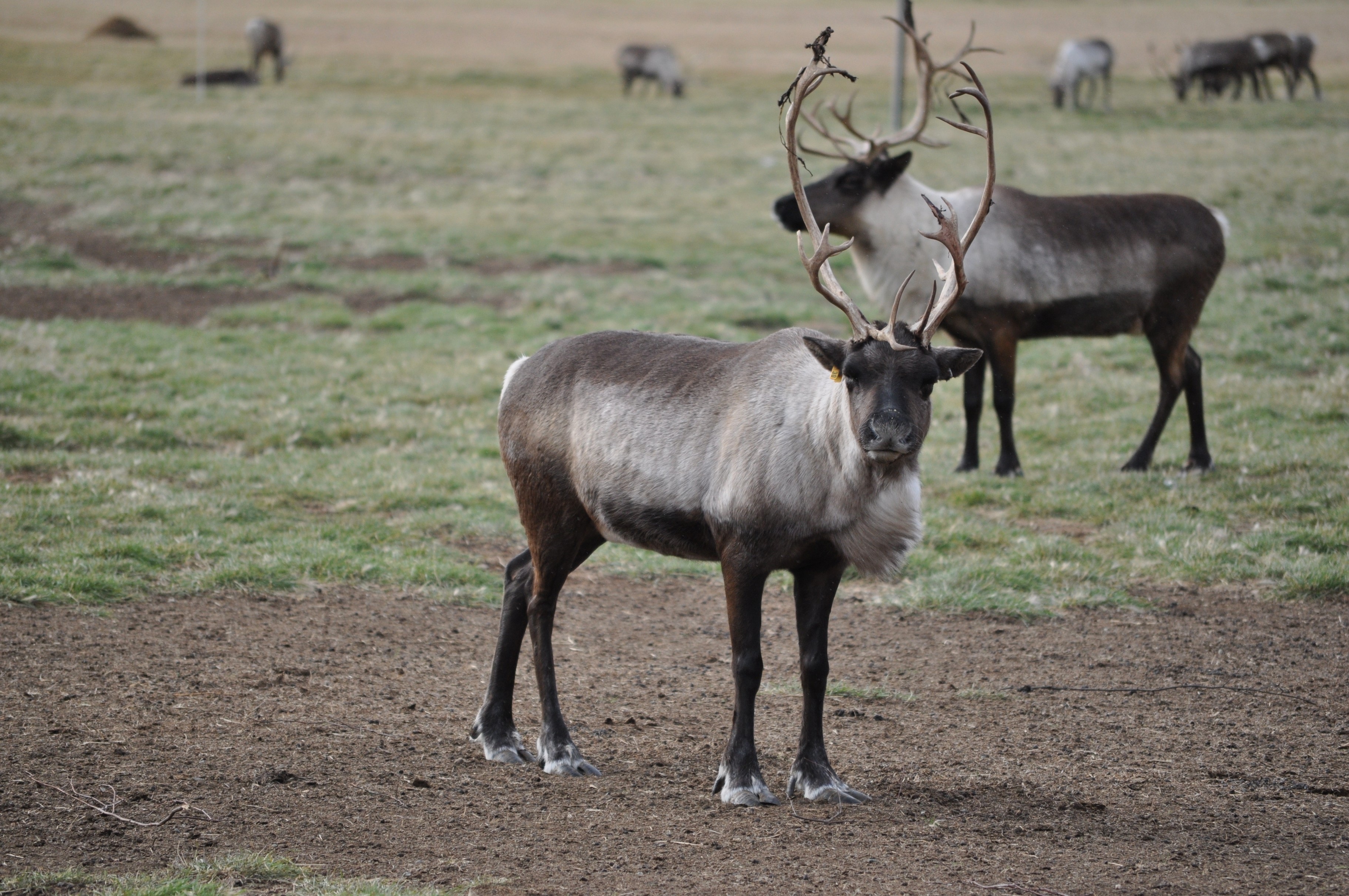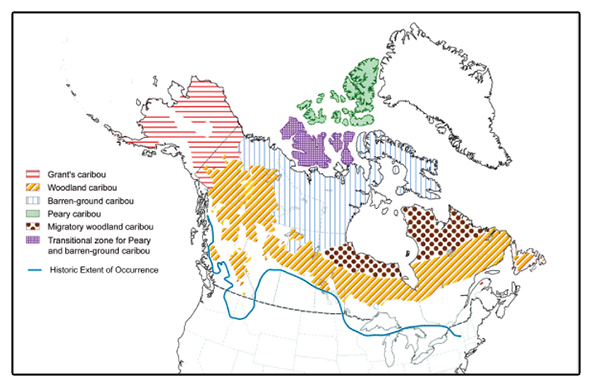About
What is a caribou?
The caribou is a large mammal in the deer family. The term "caribou" is used to designate this animal in North America, but in Europe and Asia, it is called a "reindeer". Weighing up to 200 kg, caribou are smaller than moose but larger than white-tailed deer. Caribou differ from other deer as both males and females carry antlers. Males have large, hand-shaped antlers with flattened ramifications, while those of females are similar in shape but of smaller size. Caribou are recognizable by their coat that varies in colour from off-white to dark brown, depending on the population group and the season. Lichens make up 75 % of the caribou's daily food intake in winter. However, come springtime, these herbivores add herbaceous plants and shrub leaves to their diet. In Canada, caribou is classified in four ecotypes named by biologists based on their behaviour and the environment in which they live. These types are migratory Tundra, Boreal forest, mountain and Peary caribou. The distribution area of the caribou is one of the most extensive among all Canadian mammals. This vast territory exposes the species to various geographical and landscape elements which lead to a wide genetic diversity among caribou populations.
Is it different from a reindeer?
In Europe and Asia, caribou is known as "reindeer". Glaciation cycles allowed the caribou/reindeer to colonize the entire circumpolar region, i.e., all of Earth's extreme northern area. Some communities in Europe and Russia have been herding reindeer for a long time. Despite their wide distribution, caribou and reindeer are part of the same species (Rangifer tarandus), but geographical isolation allowed subgroups to emerge with slightly different physical characteristics. Those are referred to as subspecies. The caribou/reindeer is an emblematic animal that has a vital role for several communities living in the circumpolar region. For most Southerners, the reindeer is mainly associated with the image of the animals pulling Santa Claus' sleigh.
Current world status
The caribou is a very important animal in Northern countries. First, many communities rely on caribou as a major food source. In addition, the caribou is known as a sentinel animal because it's one of the few large mammals found in the entire circumpolar territory. In Canada, caribou is found in all provinces and territories, with the exception of the Maritime provinces of New Brunswick, Nova Scotia and Prince Edward Island. Caribou has thus been studied to better understand the impact of climate change and environmental issues that are potentially linked to economic development and natural resource exploitation. Caribou populations are sensitive to environmental stresses, and historical tracking data indicate that there are natural variations in head counts. However, many caribou populations are declining across Canada and elsewhere. The main questions to answer are whether the decline is normal, if this trend will continue for long and if the populations will be able to recover. Currently, the decline rate of certain herds is astonishing; for example, the George River herd in Northern Quebec, which had over 800,000 individuals in the eary 1990's, numbers only about 5,000 in 2018. The causes of this decline are unknown. On the other hand, some herds such as the one in Alaska seem to be faring well.
Why study genomics?
An important approach to studying caribou population variations is through genetic analysis. Genome analysis, or genomics, provides information on the extent of the gene pool at a given time. Questions such as:
- Was the gene pool more extensive when the George River herd had 800,000 individuals than it is today?
- Do these populations have many different "families" contributing to calving each year?
- When the head count goes down, do the herds eventually get isolated, thereby reducing genetic exchanges and contributing to increase inbreeding?
- Are populations genetically distinct from one to another?
- Could there be a genetic selection pressure which would indicate the presence of a stressor among populations?

